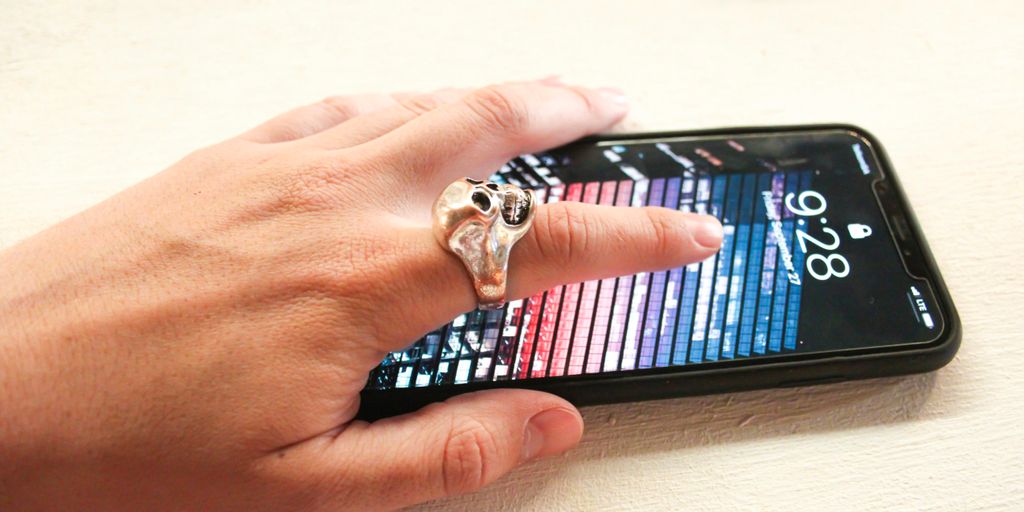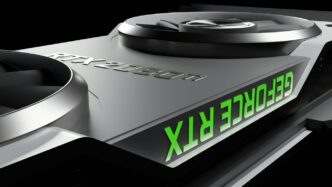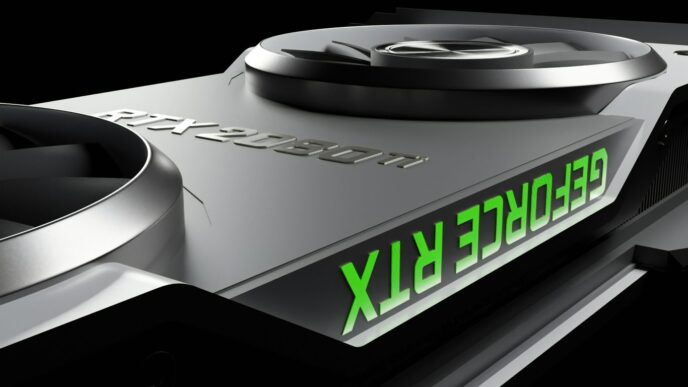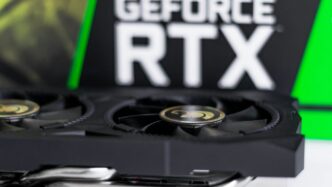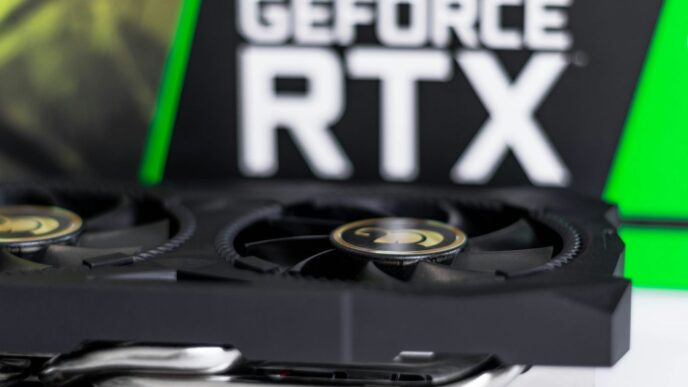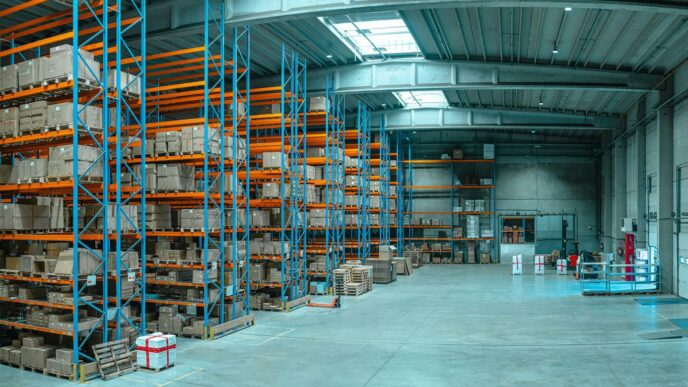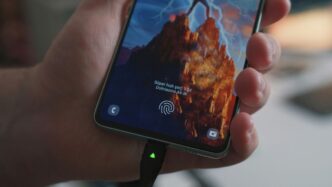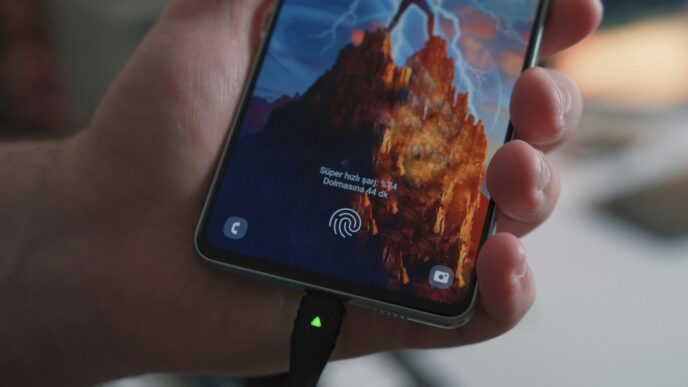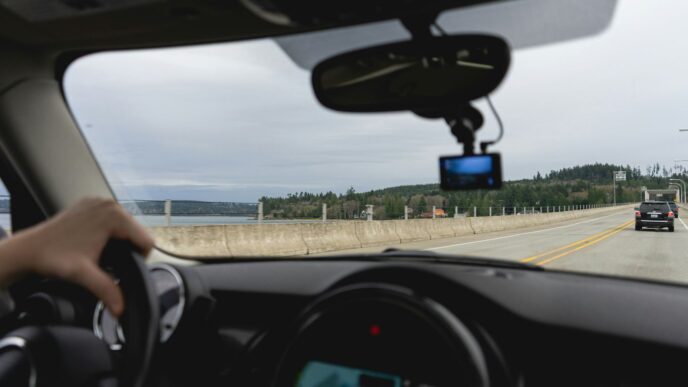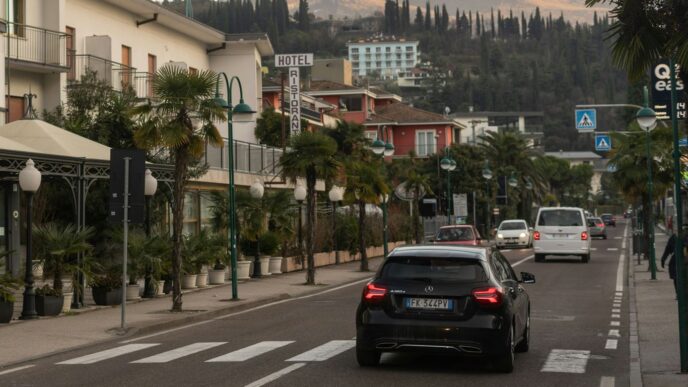So, you’re wondering if the new Samsung Galaxy Z Fold 6 is really worth the upgrade from the Fold 4? It’s a fair question. Samsung’s foldable phones have come a long way, and comparing the latest model to one from a couple of years back, like the Fold 4, can show you just how much has changed. We’ll break down the differences in design, performance, cameras, and more to help you see if making the switch makes sense for you.
Key Takeaways
- The Galaxy Z Fold 6 offers a lighter and slimmer design compared to the Fold 4, with sharper edges and more symmetrical bezels for a cleaner look.
- A wider cover display on the Fold 6 improves usability for everyday tasks when the phone is closed, making it feel more like a traditional smartphone.
- Expect a performance boost with the Snapdragon 8 Gen 3 for Galaxy chip in the Fold 6, offering better speeds and handling for demanding applications over the Fold 4.
- While the internal screen size is similar, the Fold 6 features a less noticeable crease and improved display technology, making the viewing experience better than on the Fold 4.
- The Fold 6 boasts durability upgrades like Armor Aluminum and Gorilla Glass Victus 2, along with an enhanced hinge, surpassing the Fold 4 in build quality and longevity.
Design and Build Enhancements: Fold 4 vs Fold 6
When Samsung first launched the Galaxy Z Fold 4, it was a pretty big deal. It felt like a significant step up from the Fold 3, and honestly, it was a really solid foldable phone. But now, with the Z Fold 6 out, we’re seeing some pretty noticeable design and build changes. Samsung really focused on making this new one feel a bit more refined, and dare I say, more like a regular phone when it’s all folded up.
A Lighter and Slimmer Profile
One of the first things you’ll probably notice is how much lighter the Fold 6 is. It clocks in at 239 grams, which is over 14 grams lighter than the Fold 4. It’s also thinner when unfolded, measuring just 5.6mm. This might not sound like a lot, but when you’re holding it, it really does feel less bulky. It’s not quite as unwieldy as the Fold 4 was, making it a bit easier to manage day-to-day. It’s a subtle change, but it makes a difference.
Wider Cover Display for Improved Usability
Samsung also tweaked the cover screen on the Fold 6. It’s now 6.3 inches, a small bump from the Fold 4’s 6.2 inches. More importantly, the aspect ratio changed a bit, making it less tall and narrow. This might sound minor, but it makes typing and just generally using the phone when it’s closed a lot more comfortable. It feels more natural, and less like you’re trying to type on a tiny remote control. It’s still not as wide as some other foldables out there, but it’s a definite improvement over the Fold 4. You can check out how the Fold 7 compares with its even wider display.
Sharper Edges and Symmetrical Bezels
Beyond the weight and screen size, Samsung also went for a slightly different look with the Fold 6. The edges are a bit sharper, giving it a more modern, squared-off appearance. The bezels around the displays also seem more symmetrical, which just adds to the overall cleaner aesthetic. It’s these little details that make the Fold 6 feel like a more polished device compared to the Fold 4. It’s still got that premium feel, but with a bit more of a contemporary edge.
Performance and Processing Power
When we talk about how fast a phone feels, a lot of it comes down to the processor inside. The Galaxy Z Fold 6 really steps things up here compared to the Fold 4. It’s packing the Snapdragon 8 Gen 3 for Galaxy chip, which is a pretty big deal.
Snapdragon 8 Gen 3 for Galaxy
This new chip is supposed to be faster and more efficient than the one in the Fold 4. Samsung even says it’s the quickest chip they’ve ever put in a foldable. They’re claiming about 19% faster graphics and 18% faster CPU speeds, plus a big jump in AI processing. When you combine that with 12GB of RAM and fast storage, the Fold 6 should handle multitasking and demanding apps without breaking a sweat. It’s designed to make everything feel snappier, especially when you’re juggling multiple apps or playing games.
Benchmark Score Improvements
If you’re into the numbers, the Fold 6 shows some solid gains. Tests suggest it can score about 15-20% higher in CPU tasks and up to 25% higher in GPU tasks compared to the Fold 4. For example, in Geekbench 6, the Fold 6 is hitting scores around 5,400 for multi-core performance, while the Fold 4 was closer to 4,800. This means the Fold 6 is just plain more powerful on paper.
| Benchmark | Fold 4 (Snapdragon 8+ Gen 1) | Fold 6 (Snapdragon 8 Gen 3) |
|---|---|---|
| Geekbench 6 (Multi-Core) | ~4,800 | ~5,400 |
| GPU Performance | Baseline | ~25% Improvement |
Sustained Load Performance
Now, phones can get hot when you push them hard, and that can slow them down. Samsung put a bigger cooling system, like a vapor chamber, in the Fold 6. This helps it keep performing well for longer, especially during gaming or heavy use. While the Fold 4 is still good, the Fold 6 should be able to handle those longer sessions without slowing down as much. However, it’s worth noting that even the Fold 6 can still slow down a bit if you really push it for a long time, which is pretty common for these thin foldable designs. For everyday stuff like browsing, social media, or watching videos, you probably won’t notice a huge difference, but if you’re a heavy gamer or constantly running many apps at once, the Fold 6’s improved performance and cooling will be more apparent.
Display Technology and Crease Reduction
Let’s talk about the screens on these phones, because that’s a big part of what makes a foldable a foldable, right? Samsung really tweaked things for the Fold 6, and honestly, it makes a difference.
Internal Display Size and Quality
The main screen on the Fold 6 is still that big 7.6-inch Dynamic AMOLED 2X panel. It’s got that QXGA+ resolution, so everything looks super sharp, and the 120Hz refresh rate means scrolling is buttery smooth. What’s new is that it can get way brighter, up to 2600 nits peak. I noticed this when I was outside trying to use maps; it was much easier to see than on my old Fold 4. It just makes using the phone in bright sunlight a lot less of a headache.
Reduced Crease Visibility
This is something a lot of people care about with foldables. Samsung says they’ve improved the layering of the screen, and honestly, they kind of nailed it. The crease on the Fold 6 is definitely less noticeable than on the Fold 4. You can still see it if you’re looking for it, especially at an angle, but when you’re actually using the phone, watching videos or scrolling through stuff, it kind of just fades away. It’s not completely gone, but it’s a big step up from what I remember on the Fold 4.
Cover Display Aspect Ratio Comparison
So, the outside screen on the Fold 6 is now 6.3 inches, which is a little bigger than the Fold 4’s 6.2-inch screen. It also has a slightly wider aspect ratio, 22.1:9 compared to the Fold 4’s 23.1:9. What does that mean in plain English? It’s just a bit easier to type on. I used to find myself hitting the wrong keys on the Fold 4’s narrower screen sometimes, especially when texting quickly. The Fold 6 feels more like a regular phone screen on the outside, which is a good thing. It’s not as wide as some other foldables out there, but for me, this change makes a noticeable difference in everyday use.
Camera Capabilities: Fold 4 Versus Fold 6
When Samsung first put cameras on their foldable phones, people were a bit skeptical. You know, would they be good enough to replace your regular phone? With the Fold 4, Samsung already had a pretty solid setup, basically matching what you’d find on their Galaxy S23+ from that year. It had a 50MP main camera, a 12MP ultrawide, and a 10MP telephoto lens with 3x optical zoom. Pretty standard, but it took good pictures, especially in decent light. The front cameras were a 10MP one on the cover screen and a 4MP one hidden under the main display, which was okay for quick video calls but not much else.
Now, for the Fold 6, Samsung didn’t actually change the camera hardware. Yep, you read that right. It’s the same 50MP main, 12MP ultrawide, and 10MP 3x telephoto setup as the Fold 4. The cover and under-display cameras are identical too. So, on paper, the raw photo-taking ability is the same. What Samsung did do is tweak the software. They’ve put in what they call the ‘ProVisual engine’ and updated the image processing. This means the Fold 6 might handle colors and high dynamic range (HDR) a bit better, especially in tricky lighting. It’s not a huge leap, though; reviewers say the differences are subtle and mostly come down to software tuning. Samsung could even bring some of these software improvements to the Fold 4 through updates, so the gap might shrink over time.
So, while the Fold 6 has some minor software advantages, the Fold 4’s cameras are still quite capable. You’re not missing out on entirely new lenses or a massive upgrade if you’re coming from a Fold 4. It’s more about small refinements in how the photos are processed.
Durability and Hinge Mechanism
When you’re spending this much on a phone, you want to know it can handle daily life. Samsung really focused on making the Fold 6 tougher than its predecessors.
Armor Aluminum and Gorilla Glass Victus 2
For the frame, Samsung is sticking with their Armor Aluminum. It’s a strong metal that feels solid, and it’s paired with Gorilla Glass Victus 2 on the outside. This glass is supposed to be tougher against drops and scratches. It’s good to see they’re using the latest materials, as it gives you a bit more peace of mind. A Galaxy Z Fold 4 owner was impressed by the Z Fold 7, particularly noting the significantly stronger magnets that secure the foldable phone when closed. This suggests a notable improvement in the design and build quality of the newer model compared to its predecessor. stronger magnets
Enhanced Dual-Rail Hinge
The hinge is where a lot of the magic happens with these foldables, and Samsung says they’ve improved it. It’s a dual-rail design, which basically means it’s built to spread out the stress better when you open and close it. They’re rating it for 200,000 folds, which is a lot – think about 100 folds a day for about five years. It also feels smoother when you open it, and it can hold its position at different angles without feeling wobbly. This makes using it in ‘Flex Mode’ for video calls or taking pictures much more stable.
IPX8 Water Resistance Rating
One of the big pluses for the Fold 6 is its IPX8 water resistance. This means you can drop it in about 1.5 meters of water for up to 30 minutes, and it should be fine. It’s not dustproof, though, so you’ll still want to be careful around sand or fine dust. Still, having that water resistance is a pretty big deal for a device with so many moving parts and a large screen.
Software Features and Longevity
When you’re looking at the latest foldable phones, the software and how long it’ll be supported is a big deal. Samsung’s One UI has always been pretty good, and the Fold 6 continues that trend. It comes with the latest Android version and One UI out of the box, which means you get all the new features and security updates right away. Samsung’s also been pretty good about bringing older phones up to speed, so even if you have a Fold 4, you’ll likely get many of the new software perks.
One of the biggest talking points for the Fold 6 is its new AI features. Things like real-time translation during calls, or being able to summarize meeting notes, are pretty neat. Some of these AI tricks might need specific hardware, so it’s possible they won’t make it to older models like the Fold 4. It’s a bit of a trade-off – you get the cutting-edge stuff now, but you might miss out on some future AI advancements if you stick with an older device.
Here’s a quick look at the software support timeline:
- Galaxy Z Fold 4: Launched with Android 12L, expected to receive updates up to Android 16.
- Galaxy Z Fold 5: Launched with Android 13, expected to receive updates up to Android 17.
- Galaxy Z Fold 6: Launched with Android 14, expected to receive updates up to Android 18.
Samsung promises about four years of major Android version updates and five years of security patches for its foldables. This is pretty solid, and it means your investment should last a good while. If you’re someone who likes to keep their phone for a long time, this long-term support is definitely something to consider when comparing models. It’s good to know that Samsung is committed to keeping these devices updated, which is a big plus for future foldable phones.
Pricing and Value Proposition

Let’s talk about the elephant in the room: price. Samsung’s foldables have always been premium products, and the Fold 6 continues that trend. When it first came out, the Fold 6 started at $1,899 in the US for the 256GB model. That’s a bit more than the Fold 4’s launch price of $1,799 for the same storage. It’s a noticeable jump, and you really have to want those upgrades to justify it.
Launch Price Comparison
Here’s a quick look at how the launch prices stacked up:
| Model | US Launch Price (256GB) |
|---|---|
| Galaxy Z Fold 4 | $1,799 |
| Galaxy Z Fold 6 | $1,899 |
So yeah, the Fold 6 is definitely pricier out of the gate. It makes you wonder if the improvements are worth that extra hundred bucks, especially when you consider that the Fold 4 has been out for a while and you can find it for less now.
Cost Considerations for Fold 4 Owners
If you’re rocking a Fold 4 right now, the decision to upgrade is even more complex. You’ve already invested a good chunk of change into a foldable device. While the Fold 6 offers a better experience in many ways – like that wider cover screen and the newer processor – you’re looking at another significant outlay. Samsung often has trade-in deals, which can help soften the blow, but it’s still a big commitment. Think about what you’re getting: a slimmer design, a potentially better camera, and a faster chip. Are those things worth, say, $800-$1000 off your old Fold 4? It really depends on how much you value those specific improvements.
Overall Value in the Foldable Market
When you step back and look at the whole foldable market, Samsung is still a major player, but there are more options now. Competitors like the OnePlus Open offer a different take on the foldable form factor, sometimes at a slightly lower price point or with different feature sets. The Fold 6 is a refined device, no doubt. It’s more polished than the Fold 4 was at launch. However, the foldable segment is still relatively niche. For many people, a traditional flagship phone might offer more bang for their buck. But if you’re sold on the foldable concept and want one of the most mature devices out there, the Fold 6 represents Samsung’s latest and greatest. It’s about weighing the cost against the specific benefits you’ll actually use day-to-day. For some, the convenience and novelty are worth the premium; for others, waiting for prices to drop or considering a Fold 4 might be the smarter move.
So, Is the Fold 6 Worth the Upgrade?
Looking at the Galaxy Z Fold 6, it’s clear Samsung has made some solid improvements. The design is definitely sleeker, and it feels better in your hand compared to the Fold 4. Plus, that faster processor means things just run smoother, which is always nice. The camera got a little boost too, especially in low light. But let’s be real, this upgrade comes with a higher price tag. While it’s a good phone, it doesn’t feel like a massive leap from the Fold 4, especially when you consider the cost. If you’re coming from a Fold 4, you’ll notice the differences, but whether they justify the extra cash is something you’ll have to decide for yourself. It’s a premium device, and that premium price is definitely part of the conversation.
Frequently Asked Questions
What’s different about the Fold 6’s design compared to the Fold 4?
The Galaxy Z Fold 6 is lighter and slimmer than the Fold 4, making it easier to hold. It also has a wider outside screen, which is better for using the phone when it’s closed. The edges are sharper, and the borders around the screens are more even, giving it a cleaner look.
Is the Fold 6 much faster than the Fold 4?
The Fold 6 uses a newer, faster chip called the Snapdragon 8 Gen 3 for Galaxy. This means it can run apps and games more smoothly and score higher in performance tests compared to the Fold 4.
Are there any improvements to the screens on the Fold 6?
While both phones have a large inner screen, the Fold 6’s screen has a crease that is less noticeable. The outside screen on the Fold 6 is also a bit wider, making it more comfortable to use.
How do the cameras on the Fold 6 compare to the Fold 4?
The Fold 6 has an upgraded main camera sensor and a better ultrawide camera, especially for taking pictures in low light. The zoom and front-facing cameras also see some improvements.
Is the Fold 6 more durable than the Fold 4?
The Fold 6 is built with stronger materials like Armor Aluminum and Gorilla Glass Victus 2. It also features an improved hinge that’s designed to last longer, and it still has water resistance.
What about software and future updates for the Fold 6?
The Fold 6 comes with a newer version of Android and Samsung’s One UI, and it’s promised to receive more years of software updates than the Fold 4. It also includes new AI features that can help with tasks.


